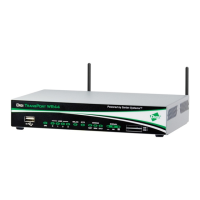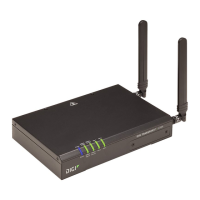OpenVPN parameters
Digi TransPort User Guide 447
OpenVPN parameters
OpenVPN can be used for connecting to the router for secure management as well as access to
services on the LAN side of the TransPort router, such as corporate messaging services, file
servers and print servers for example.
OpenVPN is a full-featured SSL VPN which implements OSI layer 2 or 3 secure network extension
using the industry standard SSL/TLS protocol, supports flexible client authentication methods
based on certificates, smart cards, and/or username/password credentials, and allows user or
group-specific access control policies using firewall rules applied to the VPN virtual interface.
OpenVPN is not a web application proxy and does not operate through a web browser.
The Digi TransPort implementation of OpenVPN can be configured as an OpenVPN server, shown
above, or as an OpenVPN client, connecting to an OpenVPN server.
On TransPort firmware, OpenVPN has been implemented as an interface. That means when an
OpenVPN tunnel connects, an interface is added to the routing table. Static routes can be
configured to point to an OpenVPN instance, and additionally, OpenVPN may learn routes from
the tunnel peer and add these routes to the routing table for the duration of the OpenVPN
tunnel. As each tunnel appears just like an interface, support for features like the firewall, NAT,
IGMP, etc are the same as for other interfaces like PPP and ETH.

